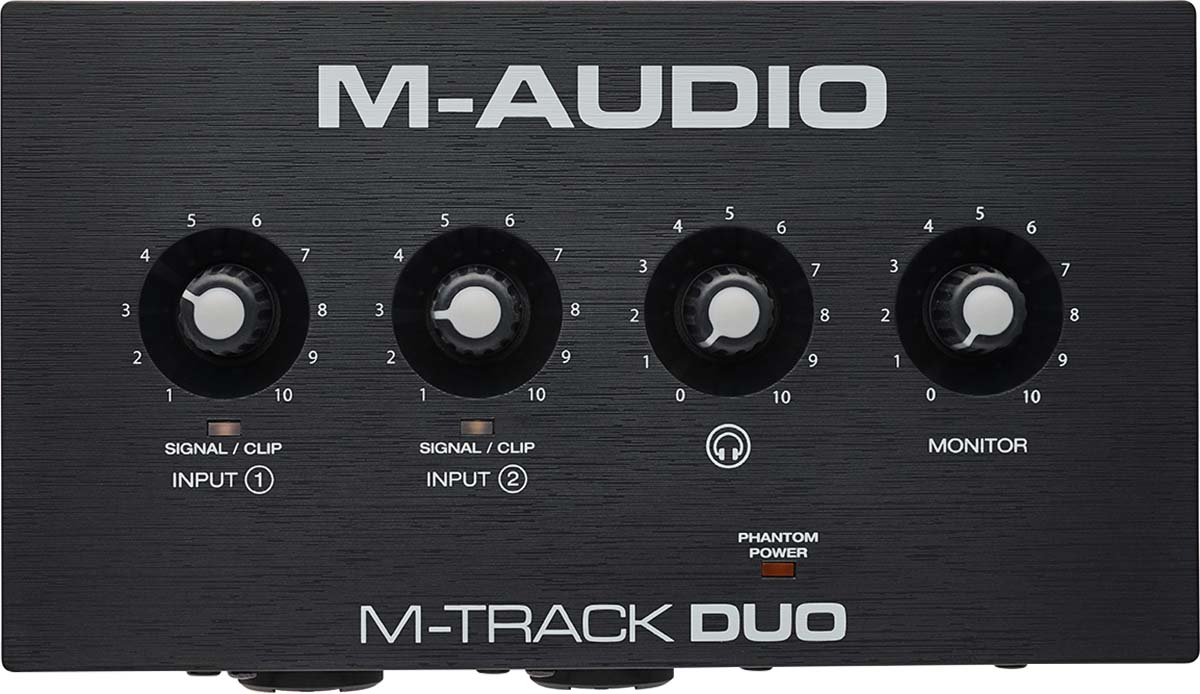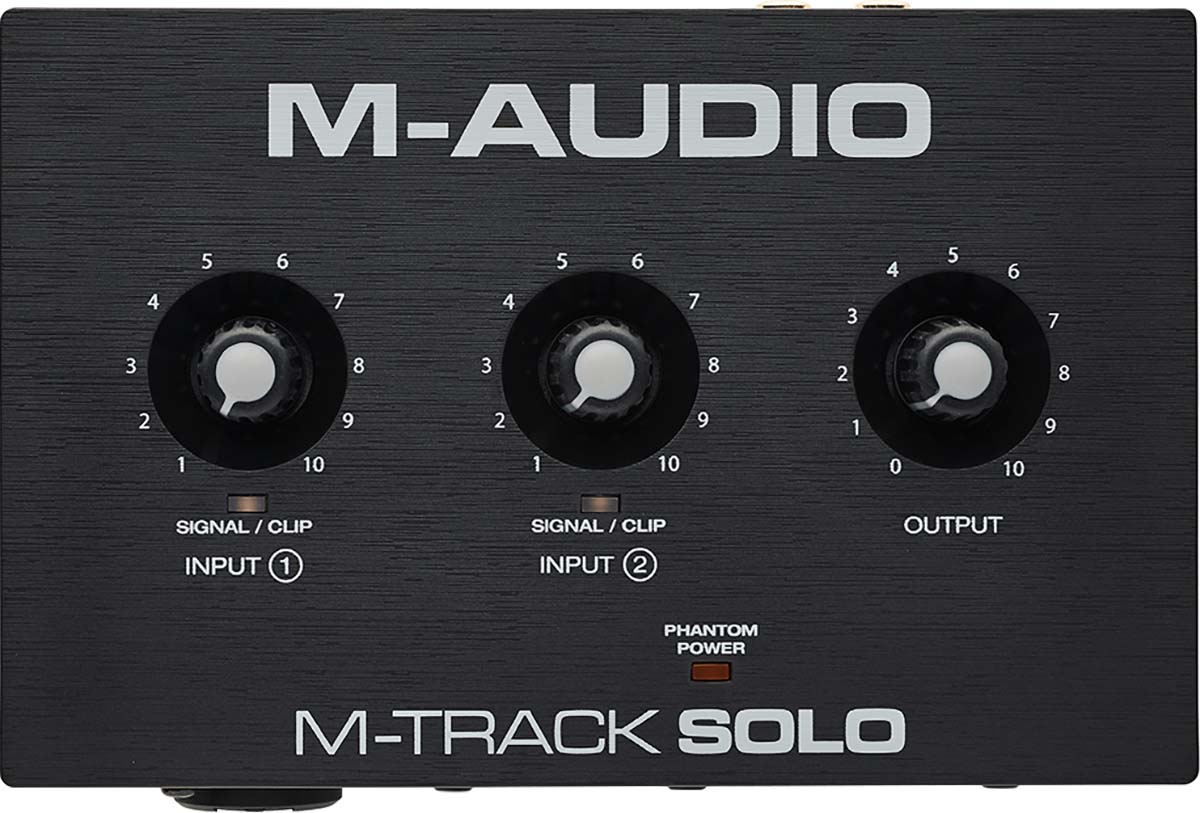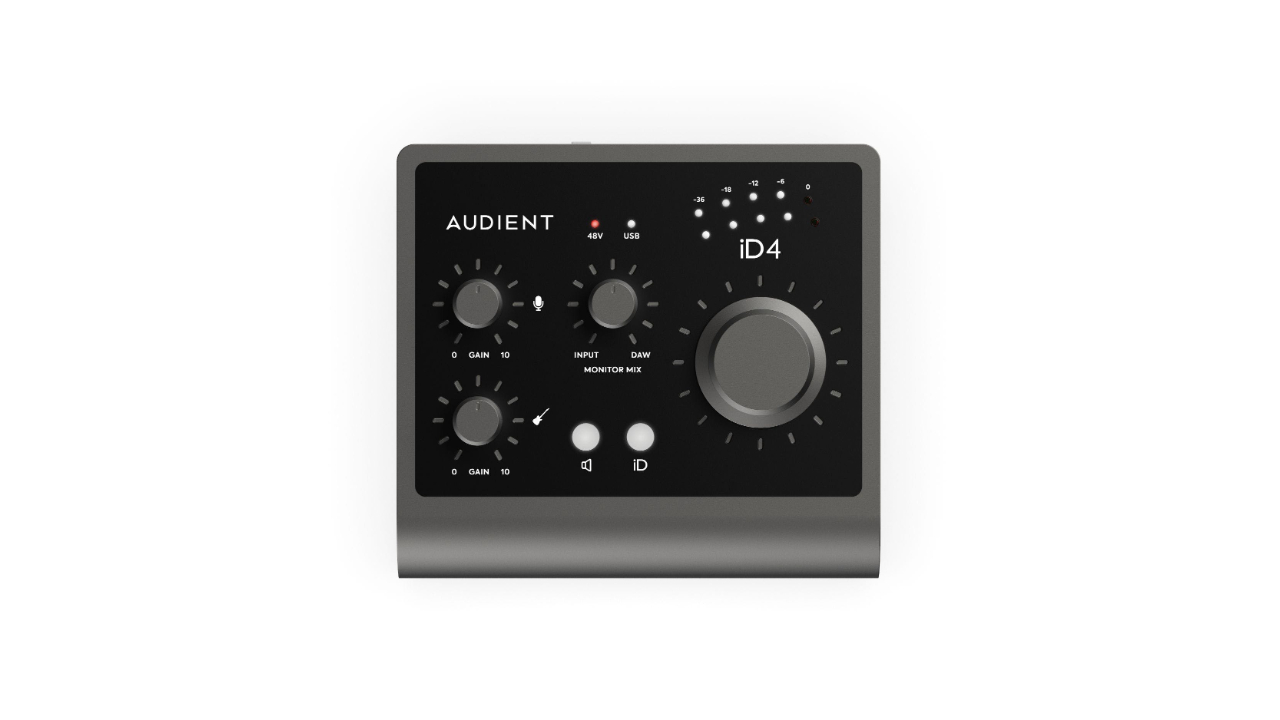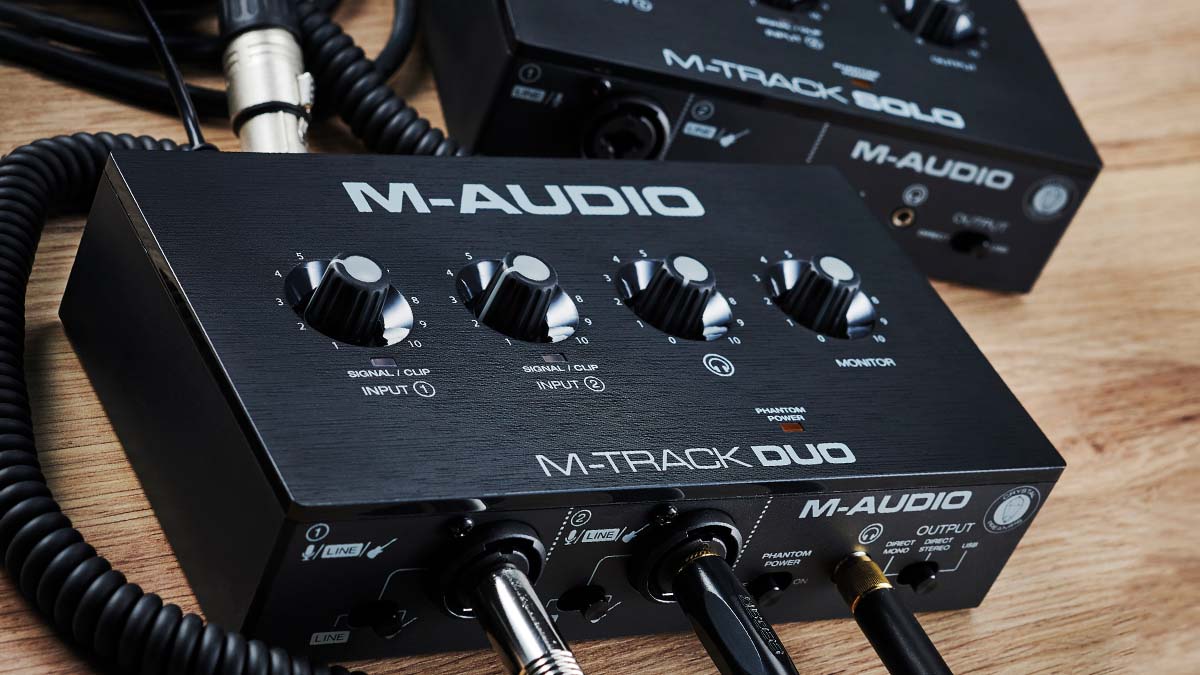MusicRadar Verdict
Suitably portable with a decent spec, these latest entry-level M-Tracks offer fantastic value.
Pros
- +
Very affordable.
- +
Decent preamp design.
- +
Light and portable with solid build quality.
- +
Integrated minimum latency monitoring.
Cons
- -
No MIDI connectivity.
- -
No USB or activity indicator.
MusicRadar's got your back
What is it?
In recent times, new audio/MIDI devices from M-Audio have simply carried the Air 192 badge and for a while, it wasn’t entirely clear whether the long-running M-Track name was being retired.
But lo and behold, two new M-Track devices have just landed on our desk and the label lives on. M-Track Solo and Duo are entry-level audio-only interfaces. Both are class-compliant USB-powered devices and have 2-in 2-out connectivity with up to 24-bit or 48kHz operation.
Their feature sets are slightly different but underlying specifications are very similar. Solo includes one mic/line channel with switchable phantom power and one line/instrument channel.
The main outputs are on unbalanced RCAs and the front headphone output is on an 1/8” mini-jack. Both outputs share a single output level control. A front switch selects between just the output stream (USB) or minimum latency monitoring option combining the inputs (mono’d) and the output stream (Direct).


Duo has a pair of mic/line/instrument inputs with global switchable phantom power. The outputs are on balanced 1/4” TRS jacks, the headphone output is a 1/4” jack, and there are separate headphone/output level controls. Like Solo, Duo also has zero latency switching to combine input and output streams, but with both mono and stereo (hard panned) options.
Each package includes them interface, a one-metre USB-B to USB-A cable and an instruction manual. There’s also a decent bundle of software, which you can download once you’ve registered the device on M-Audio’s website. Titles include the AIR Music Tech Xpand!2 synth, Eleven Lite guitar amp sim and 20 Avid plugins, as well as Pro Tools First M-Audio Edition and MPC Beats.
Despite the amazingly low price, both units look well made and although the boxy design is basic, the black finish, recessed rubberised knobs and functional selector switches feel solid. The rubber feet stop the units from slipping around on the desktop and both are pretty light, so suitably portable.
Performance and verdict
With class-compliant drivers, getting started is as simple as plugging up and making sure the device is selected in your audio software. Nevertheless, there’s no USB-active LED on either interface and no output meters, so there’s no obvious way to see everything’s working, which is annoying.
That said, you do have two-tone (green/red) input/clip-level LEDs for each input so setting up a healthy but clean signal level is easy enough. Plus, you also have an orange phantom power indicator.

• Audient iD4
The studio devilry is in the detail: Audient has really thought about everything with value and usability in mind, making what is a budget solution feel anything but inexpensive.
• Audient evo4
We’re seeing bigger recording names on cheaper and cheaper interfaces, and Audient’s is a great entry to the market.
Both interfaces use M-Audio’s Crystal Preamp design, and this provides you with plenty of clean neutral gain (up to 54dB for mic and up to 44dB for line/instrument). This is great for lower output dynamic mics or weedy passive guitars.
Even so, we found both interfaces sounded pretty nasty when they overloaded, and so I kept well away from the red clip LED. In terms of drivers, on Mac OSX and at 44.1kHz I achieved a roundtrip latency of 9.4ms with a 64 sample buffer. This clearly isn’t class-leading but is perfectly workable.
M-Audio’s no-nonsense interfaces are simplicity itself, and although it’s a slight shame that there’s no MIDI, at this price who’s complaining? And, weighing up the options, for the sake of an extra tenner we’d definitely go all out for the more flexible M-Track Duo.
MusicRadar verdict: Suitably portable with a decent spec, these latest entry-level M-Tracks offer fantastic value.
The web says
"If you want decent audio quality for an extremely modest outlay, the new M-Tracks are certainly worth a look. Although useful features have been removed to allow for the price cut, you cannot deny that they are a good deal for the money."
MusicTech
"These remarkably priced audio interfaces are unsurprisingly made of plastic. Although they are very light in comparison to more expensive interfaces of similar function, they’re not flimsy and they have reasonably sticky feet to help keep them on the desk when being pulled about by cables. The build quality is not fabulous, but at these prices you think, yep, they’re OK."
Sound On Sound
Hands-on demos
Sanjay C
Julian Krause
Podcastage
Specifications
- PRICE: M-Audio M-Track Solo £40 / €45 / $49; M-Audio M-Track Duo £49 / €59 / $69
- FREQUENCY RESPONSE: 20Hz to 20kHz
- SIGNAL TO NOISE RATIO: 109dB
- A-WEIGHTED INSTRUMENT INPUT IMPEDANCE: 1MOhm
- MIC GAIN: 0 to 54dB
- LINE/INSTRUMENT: -10dB to +44dB
- CONTACT: M-Audio
Jon is a London based platinum award winning mixer, producer, composer and club remixer with a diverse CV that spans dance, pop, rock and music for media. He’s also a long term contributor to MusicRadar's music technology tutorials and reviews. Whether working alone or collaborating he usually handles final mixdowns, so you’ll also find MusicRadar peppered with his handy mixing tips.
“Excels at unique modulated timbres, atonal drones and microtonal sequences that reinvent themselves each time you dare to touch the synth”: Soma Laboratories Lyra-4 review
“I used everything I knew about music”: How Green Day exceeded expectations with their most ambitious song
YouTube just added AI tools that makes musicians, library music and video editors redundant











